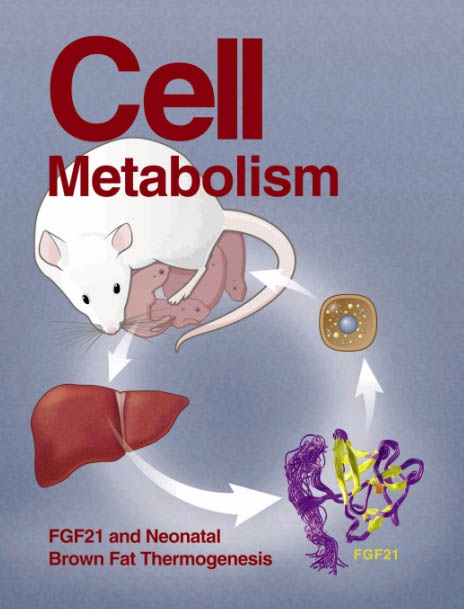通过靶向小鼠未成年和成年期的抗缪勒氏管激素信号,预防和纠正多囊卵巢综合征
IF 30.9
1区 生物学
Q1 CELL BIOLOGY
引用次数: 0
摘要
多囊卵巢综合征(PCOS)是女性最常见的内分泌疾病,会导致严重的生殖和代谢并发症,目前尚无根治方法。妊娠雄激素和抗缪勒氏管激素(AMH)过多与多囊卵巢综合征有关,在动物模型中,产前异常暴露于这些激素会诱发多囊卵巢综合征样特征。然而,AMH 对多囊卵巢综合症的影响是否会延伸至出生后早期,目前仍不得而知。临床观察显示,患有多囊卵巢综合症的母亲所生的婴儿在青春期时AMH水平较高,但这是否会导致多囊卵巢综合症的发生还不确定。在这里,我们发现小鼠在青春期暴露于较高的 AMH 水平会导致雌雄两性出现类似多囊卵巢综合症的生殖和代谢缺陷。针对AMH受体2(AMHR2)的中和抗体在小鼠青春期给药可防止这些缺陷,在成年期给药可减轻症状。这些发现强调了AMH升高在多囊卵巢综合症中的因果作用,并建议将AMHR2靶向疗法作为一种潜在的预防或治疗方法。本文章由计算机程序翻译,如有差异,请以英文原文为准。

Preventing and correcting polycystic ovary syndrome by targeting anti-Müllerian hormone signaling in minipuberty and adulthood in mice
Polycystic ovary syndrome (PCOS), the most common endocrinopathy in women, causes significant reproductive and metabolic comorbidities, with no current cure. Gestational androgen and anti-Müllerian hormone (AMH) excess are linked to PCOS, and prenatal aberrant exposure to these hormones induces PCOS-like traits in animal models. However, whether the AMH effects on PCOS programming could extend to early postnatal life remains unknown. Clinical observations showed higher AMH levels during minipuberty in infants of mothers with PCOS, but whether this contributes to PCOS development is uncertain. Here, we show that exposure to high AMH levels during minipuberty in mice causes PCOS-like reproductive and metabolic defects in both sexes. A neutralizing antibody targeting AMH receptor 2 (AMHR2) prevented these defects when administered during minipuberty and alleviated symptoms when given in adulthood. These findings highlight the causal role of elevated AMH in PCOS and suggest AMHR2-targeting therapy as a potential preventive or curative approach.
求助全文
通过发布文献求助,成功后即可免费获取论文全文。
去求助
来源期刊

Cell metabolism
生物-内分泌学与代谢
CiteScore
48.60
自引率
1.40%
发文量
173
审稿时长
2.5 months
期刊介绍:
Cell Metabolism is a top research journal established in 2005 that focuses on publishing original and impactful papers in the field of metabolic research.It covers a wide range of topics including diabetes, obesity, cardiovascular biology, aging and stress responses, circadian biology, and many others.
Cell Metabolism aims to contribute to the advancement of metabolic research by providing a platform for the publication and dissemination of high-quality research and thought-provoking articles.
 求助内容:
求助内容: 应助结果提醒方式:
应助结果提醒方式:


